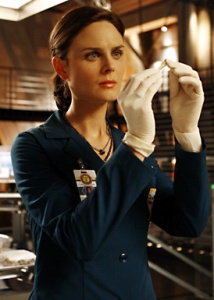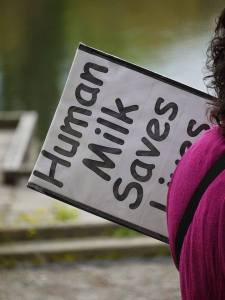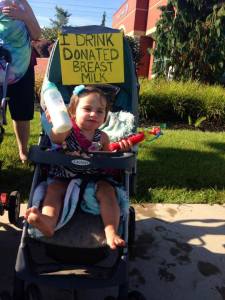People often ask me what I do. When I say that I’m a medical anthropologist and I study breast milk sharing, the usual reaction is confusion and more questions.
What is milk sharing? Why am I studying it? What is medical anthropology? Isn’t anthropology about bones and artifacts?


I think what I do is fascinating. Maybe you will, too, after you read this!
Share what? That’s so weird
In the spring of 2011, I was in the final stretch of my second pregnancy, doing what many 21st century mothers do – scouring the web. If it had to do with pregnancy, birth, babies, parenting, motherhood, or career, I was Googling it. On this particular morning, I stumbled across a Washington Post story by Rachel Saslow, Mother’s share breast milk via Internet groups despite FDA’s concerns. I was intrigued. I couldn’t get it out of my mind.
This was a tale of two mothers, Suzanne and Amanda, who met online and struck up a relationship around breast milk. Like so many women in the U.S. who initiate breastfeeding, Suzanne had tried to breastfeed, but did not make enough milk to meet her baby’s needs. She wept the first time she fed her baby formula. Then, a lactation consultant told her about Eats on Feets and Human Milk 4 Human Babies. These were milk sharing sites that helped mothers like Amanda, who had a surplus of breast milk find babies to give it to, without a fee, as a gift.
I was familiar with allonursing, Islamic milk kinship, and various forms of paid wet nursing through the ages. (btw, I love what Katie Hinde over at Mammals Suck has to say about all this, here and here).

But, I had certainly never heard of Internet breast milk sharing before reading this article. And before her LC mentioned it, neither had Suzanne, who according to the Washington Post story, thought “it was the weirdest thing” she had heard of.
But….why?
A few basic questions about this story really caught my attention. Why was the FDA freaking out? How were parents dealing with the risks involved in feeding their babies unscreened, unpasteurized breast milk from a stranger they met on the Internet? Why did some women have so much trouble making enough milk, but others had so much milk (like hundreds and hundreds of ounces) that they were giving it away, for free?
I could easily wrap my head around the idea that mothers had trouble breastfeeding. I wasn’t breastfed. When I was born in the 1970s, my mother had trouble getting me to latch. New to the U.S. and not yet fluent in English, it was hard for her to communicate with the doctors about her breastfeeding concerns. Soon she became painfully engorged. Rather than helping her breastfeed successfully, her doctor gave her some kind of shot to relieve the engorgement by drying up her milk.
Most of my friends formula fed their babies, and those who chose to breastfeed only did so for a few months, and not without a fair share of drama.
I breastfed my daughter for nearly a year, exclusively for the first 6 months, but I constantly worried about whether she was getting enough and certainly never had any milk to spare. The fact that these “milky mamas” were producing gallons of milk to give away was frankly a little mind blowing.
You mean people don’t follow doctors’ orders?
I was also fascinated by the various ways in which parents had to negotiate the risks of milk sharing. The FDA statement that discourages mothers from sharing their unpasteurized milk with other babies has to do with the potential for disease transmission, exposure to pharmaceuticals and other drugs, or bacterial contamination when milk is not stored and handled carefully.
Medical anthropologists spend a lot of time trying to understand differences in what public health officials recommend and what people actually do.
Milk sharing seems to be one of those situations where health authorities are saying one thing, but their messages, for a variety of reasons, are being reinterpreted or kind of dismissed altogether. I wanted to know what those reasons were and what parents were doing to make sense of the risk in their everyday milk sharing practices.
Saslow’s WP story touches on the social pressure on mothers to breastfeed. The growing scientific evidence for the benefits of breast milk seems to make the idea of formula feeding especially difficult for today’s parents. But, I found myself wondering whether it was really that simple. Were parents being somehow implicitly bullied into milk sharing, even if it meant putting their child at risk for HIV or exposure to chemicals and illicit drugs rather than formula feed? Honestly, this explanation didn’t quite add up.
Need. More. Information.
To help me gain insight, I logged onto Eats on Feets and Human Milk 4 Human Babies for the first time. Everyday, I devoted time to reading posts, hoping to better understand what milk sharing was all about.
The sites became my jumping off point to gather more information. After reading a bunch of posts I would surf the web and academic literature on topics that were, at the time, very foreign to me: insufficient glandular tissue (IGT), tongue tie, food allergies, early formula supplementation, the effects of pre-term birth on breastfeeding, unsupportive breastfeeding practices. It was on these sites that I encountered things like Domperidone-providing pharmacies in Vanuatu, power pumping, BFAR (breastfeeding after reduction), SNS (supplemental nursing systems), and nipple shield for the first time.
I learned about the Human Milk Banking Association of North America (HMBANA) and differences between milk banking, milk sharing, and milk selling.
I began to catch a glimpse into the politics of human milk, especially in the ways that women described milk sharing as a feminist act of resistance against capitalist, patriarchal domination, medical surveillance, and oppression of their bodies and personal decisions about what to do with their milk. (In case you’ve been hiding under a rock, women aren’t really keen to have other people tell them what to do with their bodies, including what they do with their breast milk or how they feed their babies.)

I also began to see growing antagonism against milk sharing by some vocal milk banking advocates.
I read about mothers who did everything humanly possible to try and breastfeed but still couldn’t produce enough milk. I read about the babies who became sick after being fed formula and parents who were either not eligible to receive banked donor milk or could not afford it. I read about babies with two moms, two dads, trans* parents, foster parents, adoptive parents, and grandparents who were looking for milk. I read about mothers who decided to pump their milk for donation after their babies had passed away and surrogate mothers who wanted to pump their milk for other babies after giving birth to a “surrobabe.” I read about donors who, like Amanda, had previously been on the receiving end of milk with one baby, but had been able to donate milk following a subsequent pregnancy, and vice versa.
And guess what?
This narrative that Internet milk sharing was only about parents randomly taking milk from dangerous, diseased strangers did not seem to capture what was happening on the ground. It actually looked way more complex, and rich, and interesting than this.
Attention! The train has left the station
As my understanding of Internet milk sharing grew, so did the numbers of people who were joining these sites. Local community pages began popping up in every state across the U.S., with national pages emerging for countries around the globe. In May 2011 the HM4HB site had about 3,000 members.
 Today over 56,000 people follow HM4HB alone. Thousands more follow the hundreds of other sites devoted to milk sharing.
Today over 56,000 people follow HM4HB alone. Thousands more follow the hundreds of other sites devoted to milk sharing.
The controversies surrounding milk sharing have intensified over time as well. A quick Google search yields all kinds of editorials, both praising and condemning “peer-to-peer” milk sharing activities and other types of profit-making markets for human milk. But, most of what has been written about milk sharing is little more than speculation.
Here’s the question I kept coming back to: if milk sharing is so risky, then why are so many parents continuing to do something that health authorities were telling them is super dangerous, possibly deadly, for their babies? I am guessing that the vast majority of parents in the U.S. really care about their babies and would do anything to keep them from harm.
Clearly there is a disconnect here that deserves attention. Clearly, we need a better understanding of the social context of milk sharing risk and risk reduction strategies people use.
Others, like blogger Jodine Chase at Human Milk News, agree:
“It would be much more valuable for researchers to explore how families who seek human milk for their children actually behave.”
Australian breastfeeding researcher and advocate Karleen Gribble has led the charge with her open-ended email survey, so that milk sharing donors and recipients could add their voice to the controversies and shed light on some of these questions.
Time for a research proposal!
The more I learned about milk sharing, the more questions I had. Like, how does unpasteurized shared milk affect an infant’s health? What about when that baby is fed by dozens of donors? What does it feel like to donate milk to another baby, or breastfeed someone else’s baby? What is it like to feed your baby someone else’s milk? Do babies respond (behaviorally, physiologically, immunologically) to someone else’s milk differently than to their own mother’s milk?
What do husbands, wives, grandparents, family, friends, and health professionals have to say about milk sharing? Are health care providers involved in these decisions, and if so, what do they say or do? What happens when a long-term milk sharing relationship ends, because the donor decides to wean or doesn’t have more milk to give? Does milk sharing inspire mothers to breastfeed longer? What can we learn from families who milk share to enhance the efforts of non-profit milk banking?
Like Dr. Gribble, I wanted to design a really solid study, but one that employed the tools that anthropologists use: participant observation, interviews, and field notes. I knew I wanted to do something that was ethnographic; this meant doing a study of milk sharing “on the ground” by spending time with people who are milk sharing, talking to them, observing them, learning from them.
I also began to think about the many ways an ethnographic study of milk sharing might shape how anthropologists value studies of breastfeeding within the discipline.
It turns out that milk sharing touches upon many themes that are at the heart of anthropology: cooperation, kinship, human health and development, technological innovation and sociality, sex and gender, identity, and the ways in which things (like breast milk) come to have shared meaning and value.
The lowdown on my milk sharing project
The research design of this milk sharing project is pretty straightforward. Basically, after spending over two years following milk sharing sites and doing a systematic content analysis of online posts, I designed a comprehensive online survey. The survey gave me a way to recruit participants for telephone interviews.
Online surveys and telephone interviews are relatively cheap and easy to do. But ethnographic research – the kind I wanted to do at least – required some money, mostly for travel and such.
With some internal research funding from Elon university and a Wenner-Gren Foundation post-PhD grant (THANK YOU!!!!), I am now in the middle of a multi-sited ethnographic study of milk sharing across the U.S. I basically hang out and talk story as a way to understand what milk sharing looks like on the ground.

I’ve interviewed donors, recipients, family, friends, health care providers, and basically anyone who has an opinion about milk sharing or a milk sharing story to share with me. I’ve observed donors express and prepare milk for donation. I have looked on as recipients feed donor milk to their babies. I’ve gone along to milk pick ups, drop offs, and observe conversations between donors and recipients. I’ve spent time at social events and have seen all kinds of impromptu shared breastfeeding and conversations about milk sharing.
I am amazed and humbled by what these participants have shared with me. They have welcomed me into their homes, often during difficult and chaotic circumstances, which usually involve unpredictable schedules, tiny babies, and intense sleep deprivation. They have taught me so much, and I have much to learn.
Tip of the proverbial iceberg
Usually when I say I study milk sharing, I get the raised eyebrows. But, in certain circles, people pull me aside to tell a story of a friend, sister, mother, aunty, grandmother, or wife who breastfed someone else’s baby, gave milk to someone, or got milk from someone – all without the help of the Internet I might add.
Milk sharing has deep social (and some might argue biological) roots. It’s not going to just go away because health authorities caution against it. It is part of our past, our present, and most likely our future. What is happening online is just scratching the surface.

If you haven’t read it yet – The Impact of Birthing Practices on Breastfeeding should be in your research list.
LikeLike
Thanks, yes! We actually have some interesting survey data looking at birth and hospital practices. Preliminary analyses suggest they are indeed a factor in lactation differences between milk sharing donors and recipients, in our study at least.
LikeLike
As a breastfeeding mom who donates milk to another baby…I love this article!
LikeLiked by 2 people
thank you!!
LikeLike
My son was diagnosed with Spinal Muscular Atrophy at 6 months. It is a rare genetic disease that affects all of the muscles in the body. My son was nursing, but I knew at some point he wouldn’t be able to anymore. He was in the hospital, nursing, when a speech therapist came in and said she thought he was aspirating. And before I knew it, our breastfeeding journey was over. They put in a feeding tube through his nose until he could have g tube surgery. I now had to exclusively pump and feed my son by his feeding tube. I started pumping and realized how little my son was really able to get on his own. My supply was not enough. We tried formula, but due to his disease, he could not digest it well. Through a friend, I found someone that would donate her milk to my son. I was so touched. It was hard and a little weird for me at first, but my son needed it. I had to sign a wavier for the hospital saying I knew the risks and was willing to accept any consequences. A few months later, she was not able to donate anymore. So my mom went on one of those websites and found someone else that was willing to donate. So as a mother to a boy that needs breast milk at any cost, thank you for raising more awareness for milk sharing!
LikeLiked by 2 people
thank you so much for sharing your story!
LikeLike
I fed my adopted daughter donated breast milk from various moms; some friends who had babies at the same time, and others from the Eats on Feets and Human Milk 4 Human Babies sites that I connected with. I even re-lactated, but not enough to sustain her. If it weren’t for all the moms that helped, I don’t think she be as healthy as she is now as she she didn’t stomach formula well during her hospital stay . I was not permitted to bring the donor milk in to give her. We made it to a year and then some!Thanks for writing this article!
LikeLiked by 1 person
thank you for sharing this!
LikeLike
I could not breast feed my last baby and for a 2 month period when she was reacting badly to her formula we supplemented with breast milk donated by 2 amazing women. my family doctor was very supportive and we had a wonderful experience and now my baby is a healthy 2 year old. lovey article I glad someone is researching this important topic.
LikeLiked by 1 person
Health care providers’ responses to milk sharing are interesting, and seem to be quite varied. Thanks for sharing!
LikeLike
My Child was also given donated breast milk when he was born 3 months premature and my milk production was almost inexistant. I was also given Domperidone (when I asked, I wasn’t pressured into doing this) to help me produce more milk, it worked to some extent as I managed to increase supply from 10ml a day to sometimes almost 20ml. I did this for 3 months and gave my child 10/20ml a day without fail (all I could produce pumping every 3 hours during day also at night in 1st 3 weeks) What helped and I think was a genius idea in the hospital where my child was staying was that women were breast pumping communally. At 1st that seemed a little daunting but it helped me come to terms and accept that my lack of breast milk was physiological as milk production varied immensly between women who were puping at similarly regular intervals, it also helped all women there realise that we were not ‘equal’ when it comes to breast milk. Unfortunately donated breast milk stopped after 2 weeks in hospital as my child seemed to tolerate formula despite a very immature gut system. I was heart broken not to be able to breastfeed or provide more breast milk for my child and I wish I had known of this open breast milk bank sharing system (If it also exists in UK) In the hospital where my child was staying pasturised breast milk was only given to the most vulnerable premature babies mostly for the 1st few weeks. It is in very short supply unfortunately and must go to the most needy cases understandably (I also suspect it mostly comes from medical staff or other mothers with special needs babies who are more aware of the incredible heartbreak some women face when they aren’t able, through no fault of their own to provide breast milk for their very special babies). I also have to admit that I assumed most women with healthy babies would feel uncomfortable sharing their milk with strangers, it would also be quite a demanding job and is to some extent quite a taboo subject unfortunately. To me, when I left hospital, it felt like women were expected to be able to provide milk and if they didn’t it felt as if it must be either their fault or their misguided choice and I often felt very defensive about this assumption amongst healthy bearing mothers! Around me most women were very keen to breast feed and also seemed to some extent to abhore pumping milk as it seemed to be both unnatural and unnecessary which in their case it probably was. For my part I will be eternally greatful for the anonymous women who so generously pumped their milk and provided for my baby boy and helped in part save his life in the early weeks. Yes, it is important to make women more aware that in some cases women are not able to breastfeed or give/pump enough milk to provide their babies and that it isn’t through lack of effort or knowledge about the benefits of breast milk but can be a genuine physiological deffect and that the added psychological pressure isn’t helping whether one has a healthy baby or not. Thank you for raising awareness!
LikeLiked by 1 person
you’ve raised many important issues here! thank you for sharing your story.
LikeLike
Milk sharing is prominent in my family. My dad was fed by his grandmother, who had his uncle a few months before he was born and my grandmother was in the hospital. My mom fed one of her nephews since she had my brother a month before my cousin was born, my great aunts fed their cousins and nieces and nephews, my cousins have fed their cousins children, my husband was fed by his non-biological aunt, etc…
When my son was a few weeks old, his demand was far outpacing my supply and a very dear friend who was still BFing her one year old, pumped out milk just for me. It saved our breastfeeding relationship. In turn, just this past weekend, my cousin couldn’t get her three week old to latch and had been feeding formula which did not agree with her little girl at all. So I went up there, fitted her with a nipple shield, nursed her baby, got my four month old to nurse off of her to draw out her nipples a little and cause a letdown, and pumped milk so that she had a buffer while her supply came back. With the nipple shield and support and lots of patience she’s doing great now!! I would share my milk with anyone who needed it and my boy has had three women’s milk now. He’s a 20 pound 19 week old who is EBF and healthy as a horse. Milk sharing is why I’m still BFing now and didn’t have to switch to formula and I’m so so thankful because now I’m in love with nursing my big boy and cherish every moment.
LikeLiked by 1 person
I enjoyed reading this – a family tradition of milk sharing!
LikeLike
I think it’s awesome that you’re a cultural (?) anthropologist. That was always one of my favorite classes in college. I have shared milk with a woman who had a bilateral mastectomy and more recently with a new friend who’s baby has tongue and lip tie. I also donated to a milk bank. It’s such a good feeling! Do you have any data on the types of people who donate milk and the types of people who use donated milk? At a glance, it appears mostly middle class, crunchy white moms. I wonder what percentages there are for two daddies (be still my heart), other ethnicities and for SAHM, and working moms?
LikeLiked by 1 person
Funny you should ask! Stay tuned for my next blog post that summarizes a paper we recently published that answers some of these questions.
LikeLike
Thanks so much for sharing your research journey (so far!)…inspiring stuff for me to read. I hope to be in the field soon myself.
LikeLiked by 1 person